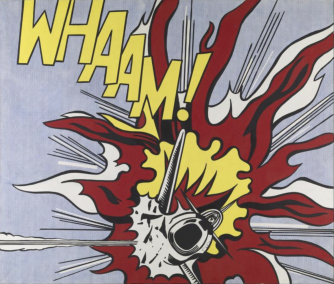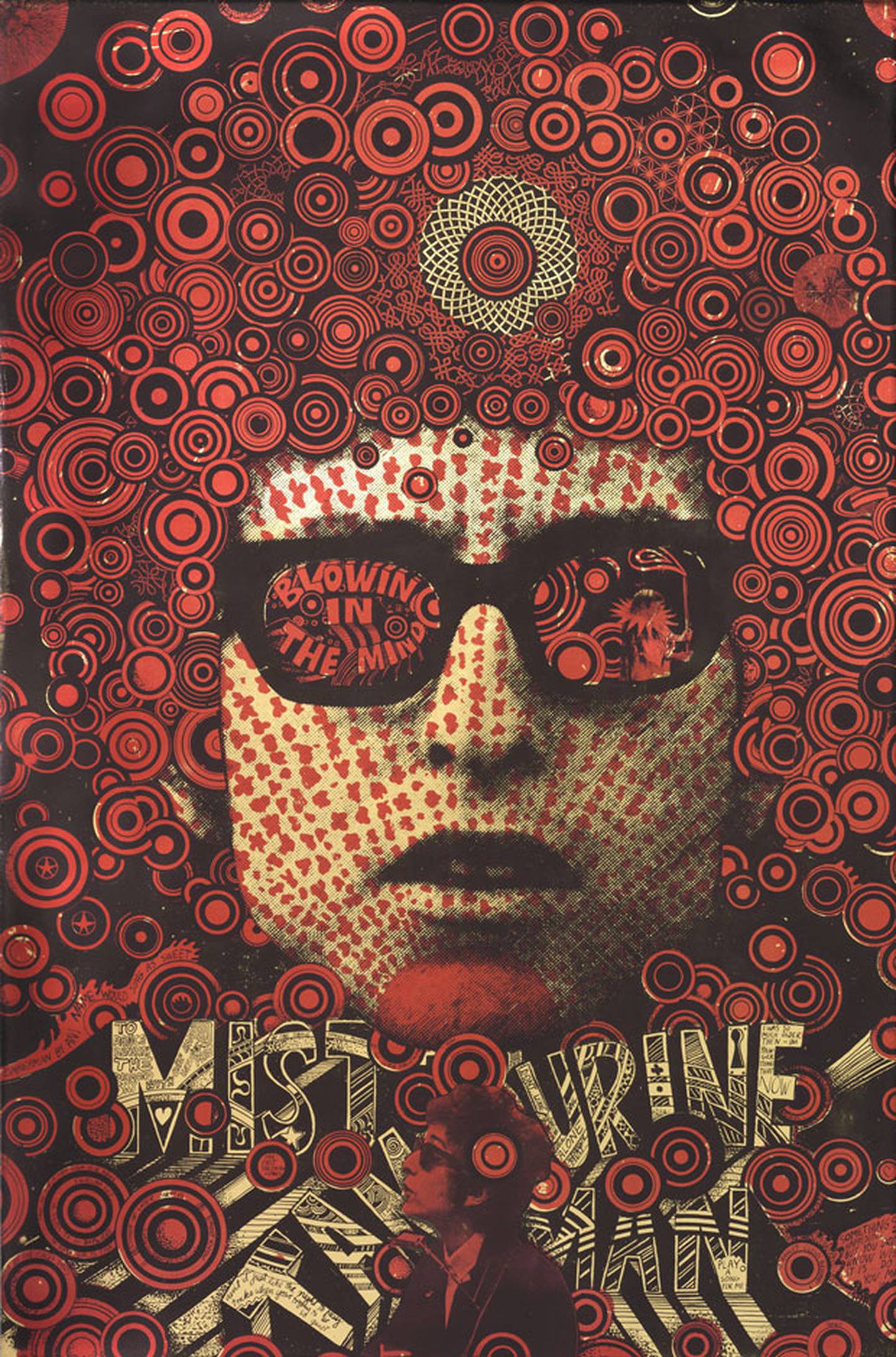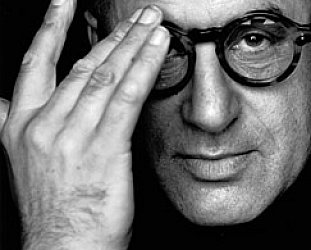Graham Reid | | 4 min read

In the early Sixties just before the Beatles conquered America through a combination of art, smarts and image -- and thereby shifted the coordinates of popular culture to Britain -- America was the nexus of global pop culture and political life.
The Kennedys, Hollywood, consumerism, girl groups, John Wayne, Marilyn Monroe ... the world had been electrified by Elvis and rock'n'roll in the Sixties, and Disney-fied in Technicolor and Cinerama. New York was the new Paris, and California the automobile-dependent American Dream state of optimism and hard edges under the bright sun.
Little wonder American artists -- and those who had grown up with globalised American iconography -- were drawn to these images and the emergent Pop Art movement became the dominant art trend.
A reading of the expansive Pop To Popism exhibition at the Art Gallery of New South Wales in Sydney confirms the global impact of Pop Art in over 200 works - mostly by big-ticket Americans, but with significant space given to European and Australian artists. It provides an insight into how artists like Andy Warhol, Roy Lichtenstein and Robert Rauschenberg reduced, refined and codified American imagery.
 These artists recalibrated sometimes commonplace culture into high art: "Marilyn Monroe's in everything," said an exasperated school student during my recent visit.
These artists recalibrated sometimes commonplace culture into high art: "Marilyn Monroe's in everything," said an exasperated school student during my recent visit.
Not quite true. Marilyn, Jackie, JFK and Elvis (in Warhols), as well as John Wayne (in Marisol's famous sculpture) and Disney figures may be prominent. But so are pictures collaged from pulp sci-fi and movie magazines (in Scottish-born artist Eduardo Paolozzi's work from the late 50s), and consumer goods like Warhol's 10 screenprints of Campbell's soup cans and Heinz tomato ketchup boxes.
In the deconstruction and reconstituting of American imagery, all these disparate elements co-exist within the same space, drawn into a movement by the critical, ironic or satirical comment which the artists bring to bear.
Tom Wesselmann's massive collage and oil Still Life #29 from 1963 is a bright collision of consumer-driven modernity (a VW Beetle in one corner) and the traditional (the enormous still life of fruit which occupies two thirds of the canvas). Numerous name players are represented in this vast exhibition " Richard Hamilton, David Hockney, Cindy Sherman, James Rosenquist, Jasper Johns, Patrick Caulfield and Robert Indiana among them - but some less familiar artists and works are perhaps more of a revelation.
Martha Rosler's photomontages from 1967-72 take photos of the Vietnam frontlines from the pages of Life and slip them into domestic settings. The war is now just outside the suburban window or in the tidy room as a distraught Vietnamese woman carries a dead baby up the stairs.
These are powerful images, more so today as the bloody brutalities of war are edited out or come with "viewers are warned some images may be disturbing".
So not everything in Pop To Popism elicits a smile for appropriating Popular Mechanics, photos of Charles Atlas and multiples of consumer goods or Jackie's face.
There is cutting social critique here too as in Warhol's insipidly green and uneasy screenprint of an electric chair (from 67), Hockney's disturbing bleak figures in The Second Marriage (63) and the Australian Brett Whitely's The American Dream (68-69), a room-filling series of panels created in New York at the height of the Vietnam war and from the depths of drink and drugs.
The exhibition is divided into interconnected subsets: The Future is Now; Swinging London; The American Dream; Euro Pop, Made in Oz, Late Pop and Popism (the latter looking at work from the 80s and including Jean-Michel Basquiat, the Australian Howard Arkley, Keith Haring and others).
 The Made in Oz gallery is striking for the vivid colour deployed by many artists, the proto-feminist and sexually-charged work of Vivienne Binns from 67 (Vag Dens is a vagina with incisors) and a series of intricate screenprints on silver and gold foil (Bob Dylan in Mr Tambourine Man) by the late Martin Sharp, best known for the album covers he did for Cream in this period, Disraeli Gears and Wheels of Fire. His splattered enamel image of Jimi Hendrix (71) is wonderfully energetic and suitably psychedelic.
The Made in Oz gallery is striking for the vivid colour deployed by many artists, the proto-feminist and sexually-charged work of Vivienne Binns from 67 (Vag Dens is a vagina with incisors) and a series of intricate screenprints on silver and gold foil (Bob Dylan in Mr Tambourine Man) by the late Martin Sharp, best known for the album covers he did for Cream in this period, Disraeli Gears and Wheels of Fire. His splattered enamel image of Jimi Hendrix (71) is wonderfully energetic and suitably psychedelic.
There is also the rage of Mike Brown's Hallelujah! collage (65) which is littered with provocative obscenities and the very Australian "bloody stuffit upya". The provocation worked and he was sentenced to three months hard labour for obscenity (reduced on appeal to a $20 fine but the conviction upheld).
No one today has complained about his Big Mess next to it from the same period which has "F*** the bloody Pope" prominent.
Times change as do our sensitivities, although in Icelandic artist Erro's Pop History (67)" which cleverly appropriates images from Lichtenstein, Claes Oldenburg, Rosenquist and others - his caricatures of Russians as crazed Cossacks come perilously close to how Nazi propaganda portrayed Jews. In brighter colours, of course.
And New Zealand-born Colin Lanceley and Ross Crothall are here too, part of the short-lived Annandale Imitation Realist Group with Brown.
Pop Art - which repositioned the commonplace, the ordinary and popular culture into the forefront of American and then international art " changed our world. Without it graphic novels wouldn't be essayed in the New York Review of Books, Arnold Schwarzenegger might never have been governor of California, and there would be no Obama "Hope" posters by Shepard Fairey.
There probably wouldn't have been New Journalism, columnists writing about their own lives rather than the political or economic elite, and none of those Lichtenstein-style cartoon ads on Auckland's buses.
As an exhibition Pop To Popism - from the amusing and entertaining to the provocative and gripping - makes you think: "Whaam!"





post a comment